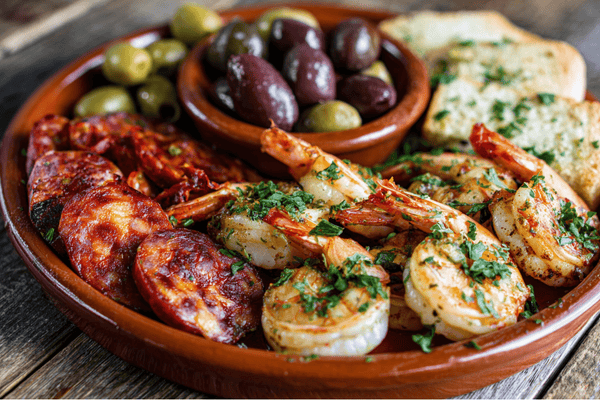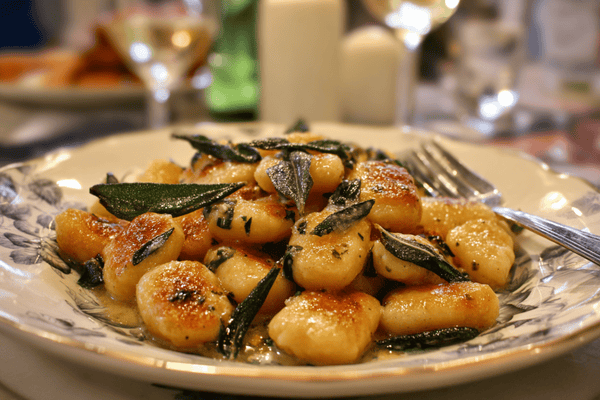
When it comes to the safekeeping of your most prized cutlery, it goes without saying that we want to protect them from potential damage. A good quality knife warrants a corresponding level of investment towards suitable protection to keep them safe and secure when not in use.
Wooden saya is the best way that you can protect your knife either when traveling or when storing your knife in the kitchen. The wooden saya adds an extra level of protection to your blade to protect it from moisture, scratches, or a chipped edge and this is even more crucial when using a delicate blade like a Japanese knife.
In this article, we will explain what a wooden saya is and weigh up whether a wooden saya is the best way to protect a knife.
Table of contents
What Is a Wooden Saya?

A wooden saya is a common knife accessory that serves to protect the blade of a knife when it is not in use.
The etymology of “saya” comes from the term “shirasaya” meaning “white scabbard.” Traditionally, shirasaya were used by samurai warriors as a special housing accessory for a sword when it was not being used in battle.
Over time, it was realized they also served to prolong the life of a sword since it protected the blade from moisture during cold winters that lead to rusting. It also helped to maintain the sharp edge of the blade for longer by preventing it from getting clipped or chipped.
Samurai sword sheaths are traditionally handcrafted, and the simplicity of their design continues into modern craftsmanship. It is believed that the shirasaya was made using a variety of wood types, believed to be from whichever trees were in the surrounding forests to the lodgings of the samurai.
What Is A Wooden Saya Useful For?
A suitable saya is a knife sheath that will ensure the longevity of a knife for years to come. They are extremely handy for keeping the knives tucked away in a drawer with other kitchen utensils, too, as they protect the blade from chipping, knicks, and scratches. Remember that knives are delicate, especially Japanese knives, so placing them in a drawer unsecured is both negligent and unwise.Wooden sayas are also of the safest options when it comes to knife storage. This is especially helpful if you have small children that may unintentionally come into contact with them.
Despite the given risks of traveling with knives, sayas are considered to be one of the safest options available and provide an ideal option for safe transportation of your blade. They enable you to carry a knife without having to be concerned about damaging the delicate cutting edge or, as mentioned, injuring yourself. This makes them an optimal choice for chefs on the move or anyone who needs to travel somewhere with their knife.
What Are Wooden Sayas Made From?

Although the use of a scabbard is not unique to Japanese blades, few are considered to perform as well as a Japanese wooden saya. Today, a wooden saya is typically made using magnolia, bamboo, ho, or nurizaya wood.
Saya’s are often made using Japanese Magnolia wood. The magnolia tree is a “hardwood” which means its bodily structure has cells with open ends that form channels or vessels for transporting water around the tree. Essentially, it means that it is a permeable or porous material. There are several reasons this makes magnolia a popular choice of material for a Saya.
Firstly, it has a strong resistance to water so is able to hold out against erosion for a longer period of time than other cuts of wood. This serves to prevent moisture retention that would lead to rusting and corrosion of your blade. The sheath should fit the knife snugly.
Secondly, magnolia wood does not absorb or pass on taste. This is ideal particularly if you use a general-purpose kitchen knife like a Santoku. It is also for this reason magnolia is commonly used to make wooden bowls and dishes.
Thirdly, the material does not carry an odor.
Fourthly, it is a solid, stable wood that securely holds your blade in place.
Lastly, the typically fine grain of magnolia wood is easy to paint if you wished to decorate or customize your sheath, adding to the aesthetic quality.
There are a number of more premium wood cuts of choice too. For instance, Nurizaya wood and Ho wood are both directly imported from Japan, making them an ideal choice if you would like a more traditional touch and feel for the scabbard of your knife blade.
Ho wood is particularly sought after for Japanese knives; not only is it gentle on the delicate knife-edge, it is also moisture resistant and does not contain any insoluble substances that could lead to corrosion in a carbon steel knife.
Many saya covers come with a pin that is inserted at the heel of the knife to keep it secure in the cover. Others are custom-built to exact specifications and use a friction fit to keep the blade in place.
How to Use a Wooden Saya

While a wooden saya is designed to protect a knife, incorrect use can end up having an opposite effect. Firstly, it is fundamental that you only put your knife in a wooden saya once it is completely dry as any moisture left on the blade will lead to rusting.
When inserting your knife into a saya, repeatedly rubbing the sharp edge will blunt the blade. It is crucial the back of the blade makes contact with the inside of the sheath rather than the delicate edge. The saya cover should fit the blade with with a snug fit.
If you need to clean your wooden saya, do not put it in the dishwasher. This will cause the wood to warp or swell. Rather, the most suitable method would be to use pipe cleaners for the interior and a damp cloth for the exterior.
Things to Look Out For
Fitting sayas to knives is often way more difficult than you may at first think. It is worth noting that different knives will vary in their dimensions. Even blades of the same length and type could differ in width or thickness from one another.It is important that you look out for sayas that correctly fit the blades that you own. If the saya is too narrow and does not cover the entire blade it offsets the reason for acquiring one in the first place. Ensure that you are getting the right size of saya for your blade, taking into consideration both length, height, and thickness along the blade and the heel.
Although minor, all of these components need to fit in the interior cavity space of the saya; these slight differences could result in the saya not fitting a knife properly. Make sure that the entire blade is shielded by the saya too.
It is for this reason many suppliers recommended to invest in a wooden saya along with your knife at the time of purchase. We advise against purchasing generic wooden sheaths for your blade because the ill-fitting wood (if it fits at all) will likely blunt the knife edge after a few uses.
Final Thoughts
When it comes to choosing the best way to protect a knife, a wooden saya certainly comes into the fold for its practicality and utility. If they fit well, they are simple, easy to use, and exceptionally versatile.
Overall, it entirely depends upon what you plan to use it for. In many ways, it falls upon the common trope: you do not need one until you do, by then it’s usually too late and your knife will be unnecessarily damaged.
When used for travel, a wooden saya seamlessly equips your blade with security and protection and it’s also excellent for adding an additional layer of protection to the blade for kitchen storage.
They are ideal for keeping your knife stored away in a drawer while also protecting the sharp edge. If you are using it purely for knife storage at home, there are, of course, other options available that may be more suitable such as magnetic knife racks and conventional knife blocks. All in all, they are an extremely versatile instrument and certainly worth considering for the protection of your knives.
For more information on other storage ideas, please read here


